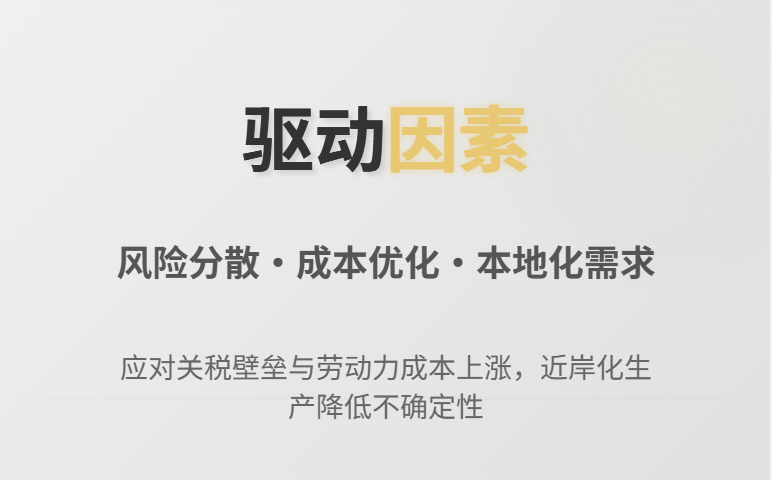In recent years, an increasing number of Chinese manufacturing companies have begun to establish production bases in Southeast Asia, Mexico, Eastern Europe, and even North Africa. This trend is not limited to large leading enterprises; many medium-sized enterprises have also joined the wave of "going global to build factories." This move has not only changed the traditional "Chinese products, global sales" model but also directly impacted the global supply chain landscape and the future development direction of China's foreign trade industry.
According to industry statistics, the proportion of China's outward direct investment in manufacturing has continued to grow over the past five years. Between 2020 and 2023, the compound annual growth rate of Chinese manufacturing investment in Southeast Asia and Mexico exceeded 12%. Looking globally, the "China + 1" strategy allows companies to retain core high-end production capacity in China while relocating labor-intensive and assembly lines to countries with lower costs and more favorable policy environments.

| Favorable opportunities | Potential challenges |
|---|---|
|
|
For example, after a Chinese electronics manufacturer set up a factory in Vietnam, its domestic factory continued to supply core chips and high-end components, accounting for 70% of the value of the entire supply chain, while the overseas factory was responsible for final assembly and OEM manufacturing, responding to the rapidly changing demands of its North American customers. This move effectively improved supply flexibility and also prompted the transformation of traditional foreign trade functions into supply chain service providers.
According to McKinsey's 2023 Supply Chain Research Report, the global supply chain is shifting from a single-hub model to a regional multi-center model. It is estimated that within the next five years, more than 35% of companies in the global manufacturing landscape will adopt a strategy of linking at least two production bases. This layered evolution is not "decoupling," but rather a reshaping of the supply chain network through "interconnectivity," taking into account cost, timeliness, and risk.

In response to the evolution of global supply chains, foreign trade teams must not only focus on traditional export business but also become multi-skilled supply chain service experts. This includes mastering data-driven customer targeting, understanding local market compliance and cultural differences, strengthening cross-border communication and collaboration, and driving enterprise transformation and upgrading with a flexible and diverse perspective.
Start your journey of building overseas factories and establishing a localized supply chain now to enhance your competitiveness and market responsiveness!
```
.png?x-oss-process=image/resize,h_100,m_lfit/format,webp)
.png?x-oss-process=image/resize,h_100,m_lfit/format,webp)

.png?x-oss-process=image/resize,h_100,m_lfit/format,webp)
.png?x-oss-process=image/resize,h_100,m_lfit/format,webp)
.png?x-oss-process=image/resize,h_100,m_lfit/format,webp)
.png?x-oss-process=image/resize,h_100,m_lfit/format,webp)
